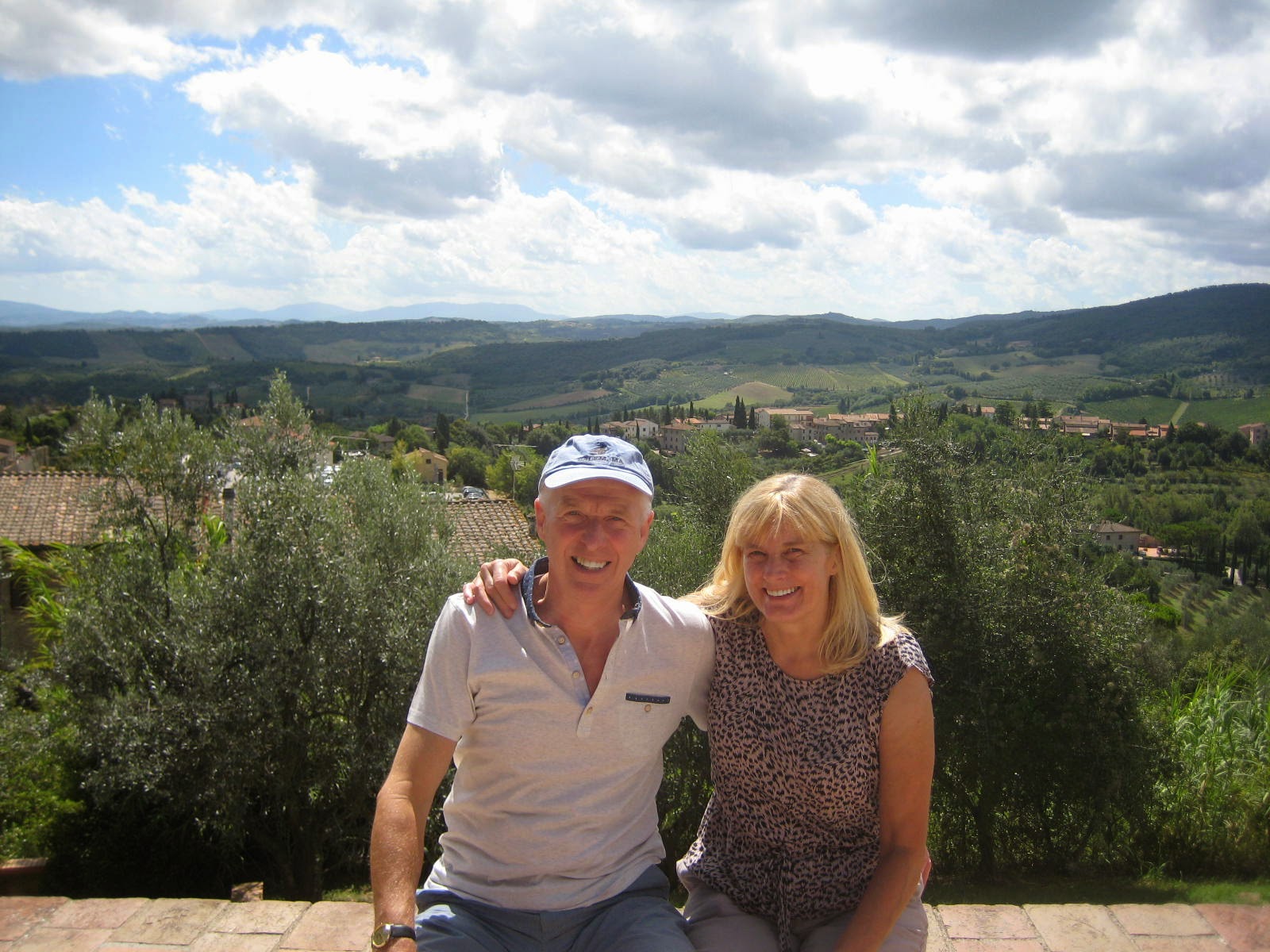San Gimignano
San Gimignano is a small walled medieval hill town, famous for its medieval architecture. It rises on top of a hill 334m above sea level, clearly visible in the distance with its many towers. Today 13 towers remain of the 72 towers of the fourteenth century, when every well off family built a tower to show its wealth and power. Within the town walls, the well-preserved buildings include examples of Romanesque and Gothic architecture. The town also is known for the white wine, Vernaccia di San Gimignano, produced from the ancient variety of Vernaccia grape which is grown on the sandstone hillsides of the area and which we greatly enjoyed.
Below is the view from our bedroom window, vineyards, wooded hills and blue sky. We did not see any wild boar but did catch sight of a few deer. Not too many birds, regrettably the Italians shoot them all. However, there are conservation areas being set up where shooting is forbidden. Hopefully it is not too little, too late.
Okay, we did the culture bit but also a couple of days by the pool reading books. It's holiday after all. Lovely and quiet, as you can see.
Siena
The Duomo was begun in the 12th century and is one of the great examples of Italian Romanesque-Gothic architecture. Its main façade was completed in 1380. It is unusual for a cathedral in that its axis runs north-south. This is because it was originally intended to be the largest cathedral in the world, with a north-south transept and an east-west nave. After the completion of the transept and the building of the east wall the money ran out and the rest of the cathedral was abandoned.
The shell-shaped Piazza del Campo, the town square, houses the Palazzo Pubblico and the Torre del Mangia, and is famous for hosting the Palio horse race.
We missed the racing but not the ice cream!
The nearest that we got to any wild boar...
Volterra
Once we got down the track from Il Borghetto to the main road, a 45 minute drive through beautiful undulating countryside took us to the hill town Volterra. The town was a Neolithic settlement and an important Etruscan centre and is believed to have been continuously inhabited as a city since at least the end of the 8th century BC.
Volterra is an important location in Stephenie Meyer's Twilight series. In the books, Volterra is home to the Volturi, a coven of rich, regal, powerful ancient vampires. However, the film was shot in Montepulciano!
The food was sumptuous, as was the local wine, served by the charming, very knowledgeable Nico.
A final view from our bedroom window before the drive back to Pisa Airport.
















No comments:
Post a Comment